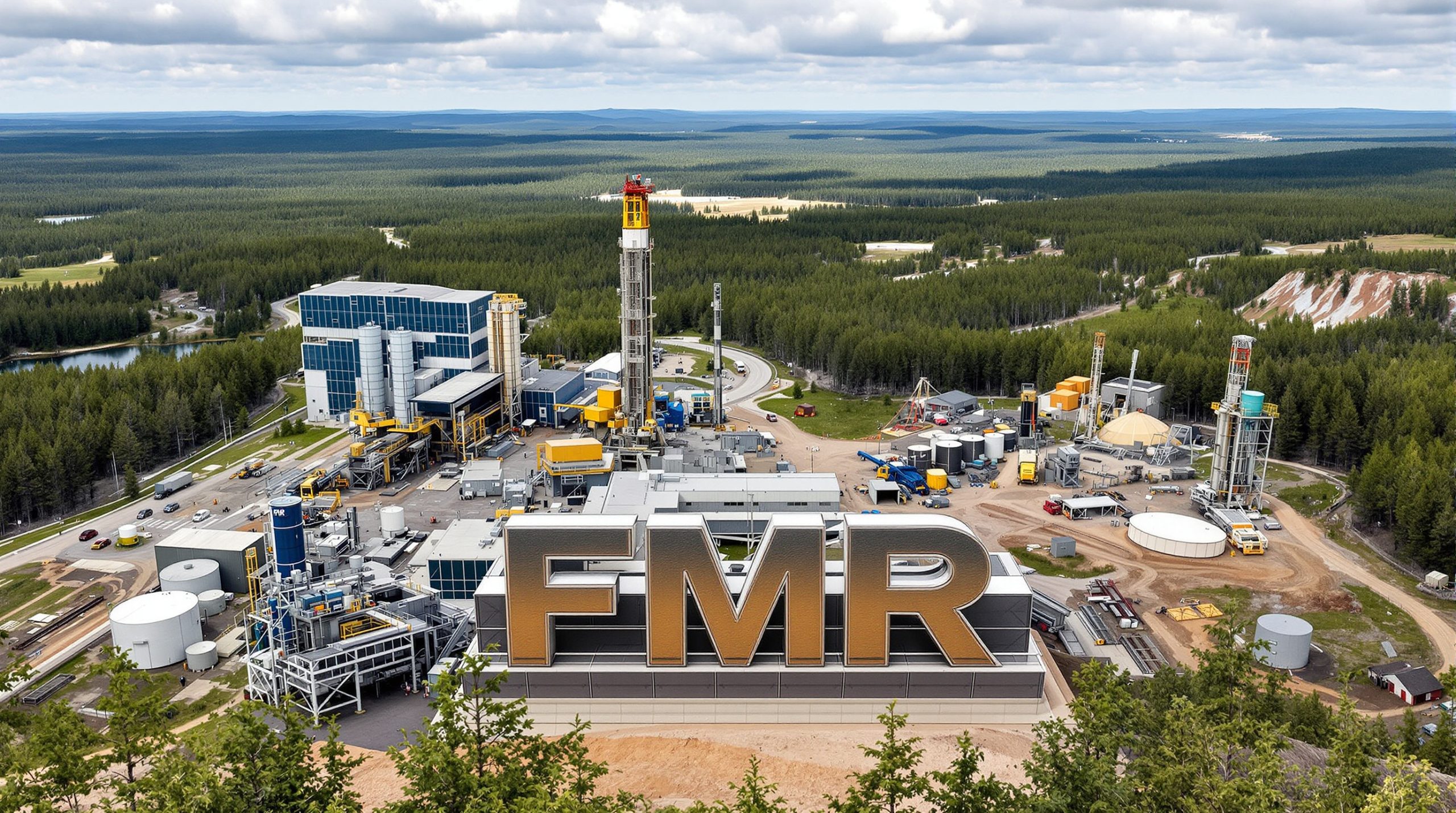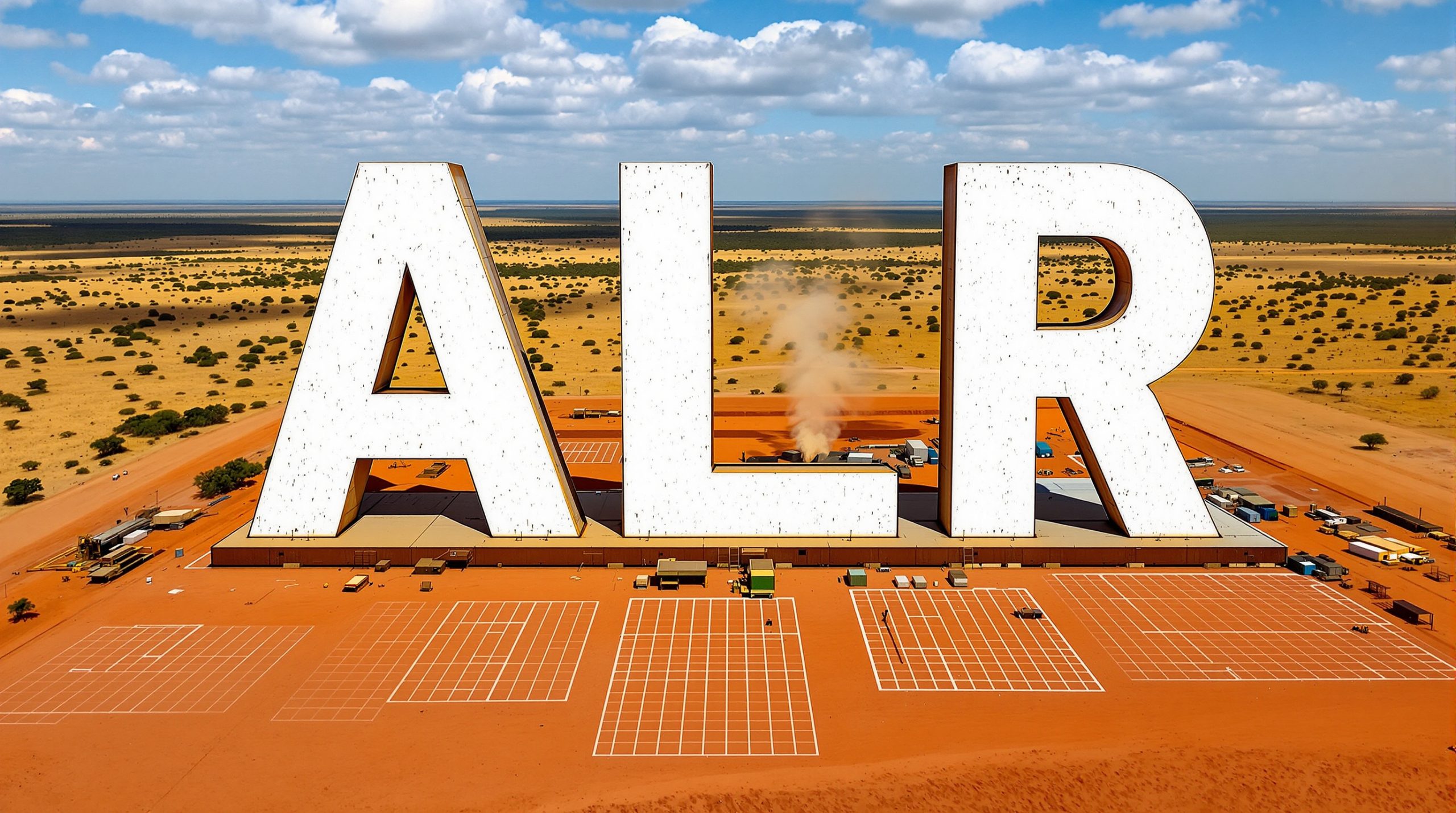Satellite Data Unveils Promising Antimony Targets at Red Mountain's Armidale Project
Red Mountain Mining (ASX: RMX) has announced significant findings from satellite data reveals Red Mountain Mining targets at its Armidale Antimony-Gold Project, revealing extensive mineral signatures that highlight new exploration targets along key fault systems in New South Wales.
Advanced Technology Uncovers Multiple Antimony Targets
Processing of Sentinel-2 multispectral satellite data over Red Mountain's Armidale project has identified numerous spectral signatures indicating potential stibnite (antimony sulfide) mineralization and jarosite, a mineral commonly associated with the weathering of sulfides.
The study, conducted by consultants Dirt Exploration, has identified 100 distinct stibnite features with clear structural control along or parallel to the Peel Fault System. These findings provide compelling evidence of structurally-controlled vein-style antimony mineralization across the 85km stretch of the project area.
"The targets make geological sense and are easy to verify via fieldwork. It is satisfying to see an enigmatic area receive attention from advanced exploration tools such as satellite remote sensing and data analysis tools from AI that are transforming exploration." – Dr. Neil Pendock, Dirt Exploration
Key Target Areas Confirmed
The satellite analysis has highlighted several priority areas for follow-up exploration:
- Horsley Station Gold Prospect: Strongly highlighted by stibnite spectral signatures
- East Hills Antimony Prospect: Prominent in both stibnite and jarosite signatures
- Oaky Creek Area: Shows elevated helium response, potentially indicating an underlying granitic source for surface antimony mineralization
- Namoi Fault: Numerous new targets identified along this structural corridor
- Northern portion of EL9732: Multiple anomalies in an area with historical alluvial gold mining but no recorded antimony mineralization
Understanding Spectral Mineral Mapping
Spectral mineral mapping uses satellite sensors to detect specific wavelengths of light reflected from the Earth's surface. Different minerals absorb and reflect light in unique patterns, creating distinctive spectral "fingerprints" that can be identified from space.
In this case, Red Mountain used Sentinel-2 satellite data, which combines visible/near-infrared (VNIR) and shortwave infrared (SWIR) imagery. The data was processed to unmix the spectral signatures, effectively separating different mineral reflectance patterns to identify stibnite and jarosite occurrences.
This technology is particularly valuable in remote or extensive areas where traditional ground-based exploration would be time-consuming and costly. By pinpointing specific mineral signatures from satellite data, companies can focus their ground exploration efforts on the most promising targets.
Helium Signatures Point to Potential Source
One of the most intriguing findings is a NNE-SSW trending corridor of elevated helium running through the Oaky Creek prospect. Elevated helium can be generated by the decay of radioactive elements in concealed granites, potentially indicating an underlying granitic source for the stibnite mineralization observed at the surface.
This finding provides valuable insights into the potential source of mineralization and adds another layer to the exploration model for the project.
Next Steps in Exploration Program
Red Mountain has already commenced the second phase of exploration at the Armidale project. The company plans to:
- Secure land access to ground-truth the newly identified stibnite and jarosite spectral anomalies
- Focus on anomalies adjacent to known mineralization and along major structures
- Continue soil and rock chip sampling at Oaky Creek, East Hills, and Horsley Station
- Integrate satellite data with other geochemical, geological, and geophysical datasets to generate follow-up targets
Strategic Position in Australia's Premier Antimony Province
The Armidale antimony-gold project is strategically located approximately 85km west of Australia's largest known antimony deposit, Larvotto's Hillgrove deposit. The 100% RMX-owned EL9732 extends for 85km along the western side of the Peel Fault within the Southern New England Orogen, recognised as Australia's premier antimony province.
The project area features:
- Isoclinally folded Carboniferous metasediments of the Tamworth Belt
- Ultramafic mélanges of the Great Serpentinite Belt along the Peel Fault
- A geological setting favourable for hydrothermal quartz veins, breccias, and stockworks containing antimony, gold, and tungsten mineralization
Despite the Peel Fault System's recognised world-class mineral potential, with over 400 known orogenic gold and base metal occurrences along its 400km strike, it remains underexplored with less than 200 mostly shallow drill holes across its entire length.
What is Antimony and Why is it Important?
Antimony is a silvery-white, brittle semi-metal that has been classified as a critical mineral by many countries including Australia, the United States, and the European Union. Its strategic importance stems from its diverse applications and limited supply sources.
Key applications of antimony include:
- Flame retardants: The largest use of antimony is in flame-retardant compounds for products like electronics, textiles, and plastics
- Lead-acid batteries: Used to harden lead in batteries, improving performance and durability
- Defense applications: Component in ammunition, infrared detectors, and night-vision devices
- Semiconductors and electronic devices: Used in the production of diodes, infrared detectors, and Hall-effect devices
- Glass and ceramics: Added to create special optical properties or as a fining agent
Supply chain concerns:
Global antimony supply is heavily concentrated, with China controlling approximately 60% of world production. This concentration creates supply risks, particularly as demand increases for critical minerals used in modern technologies.
Australia's Southern New England Orogen, where Red Mountain's Armidale project is located, represents one of the few significant antimony provinces outside China, making it strategically important for diversifying global supply chains.
Why Investors Should Watch Red Mountain Mining
Red Mountain's Armidale Antimony-Gold Project presents a compelling investment opportunity for several key reasons:
- Critical Mineral Focus: Antimony is classified as a critical mineral with applications in flame retardants, batteries, and defense technologies, with supply chains heavily dependent on China
- Advanced Exploration Technologies: The company is employing cutting-edge satellite data reveals Red Mountain Mining targets to identify targets efficiently
- Strategic Location: The project is situated in Australia's premier antimony province near significant known deposits
- Untapped Potential: Despite known mineralization, the area remains largely underexplored
- Multiple Target Areas: The satellite data has identified numerous promising targets across the extensive 85km strike length
With an active exploration program underway and the recent identification of multiple new target areas, Red Mountain is well-positioned to advance its understanding of the antimony and gold potential at Armidale in the coming months.
For investors interested in the critical minerals space, Red Mountain's systematic approach to exploration and use of advanced technologies makes it a company worth watching closely as it continues to develop its antimony and gold assets in a favourable geological setting.
Want to Capitalise on the Critical Minerals Opportunity?
Discover how Red Mountain Mining is leveraging cutting-edge satellite technology to unlock antimony potential in Australia's premier province. With 100 distinct targets identified along an 85km strike length and exploration already underway, now is the time to learn more about this strategic investment opportunity in a globally significant critical mineral. Visit Red Mountain Mining's Investor Hub for comprehensive project information and to stay updated on the company's progress at the Armidale Antimony-Gold Project.




